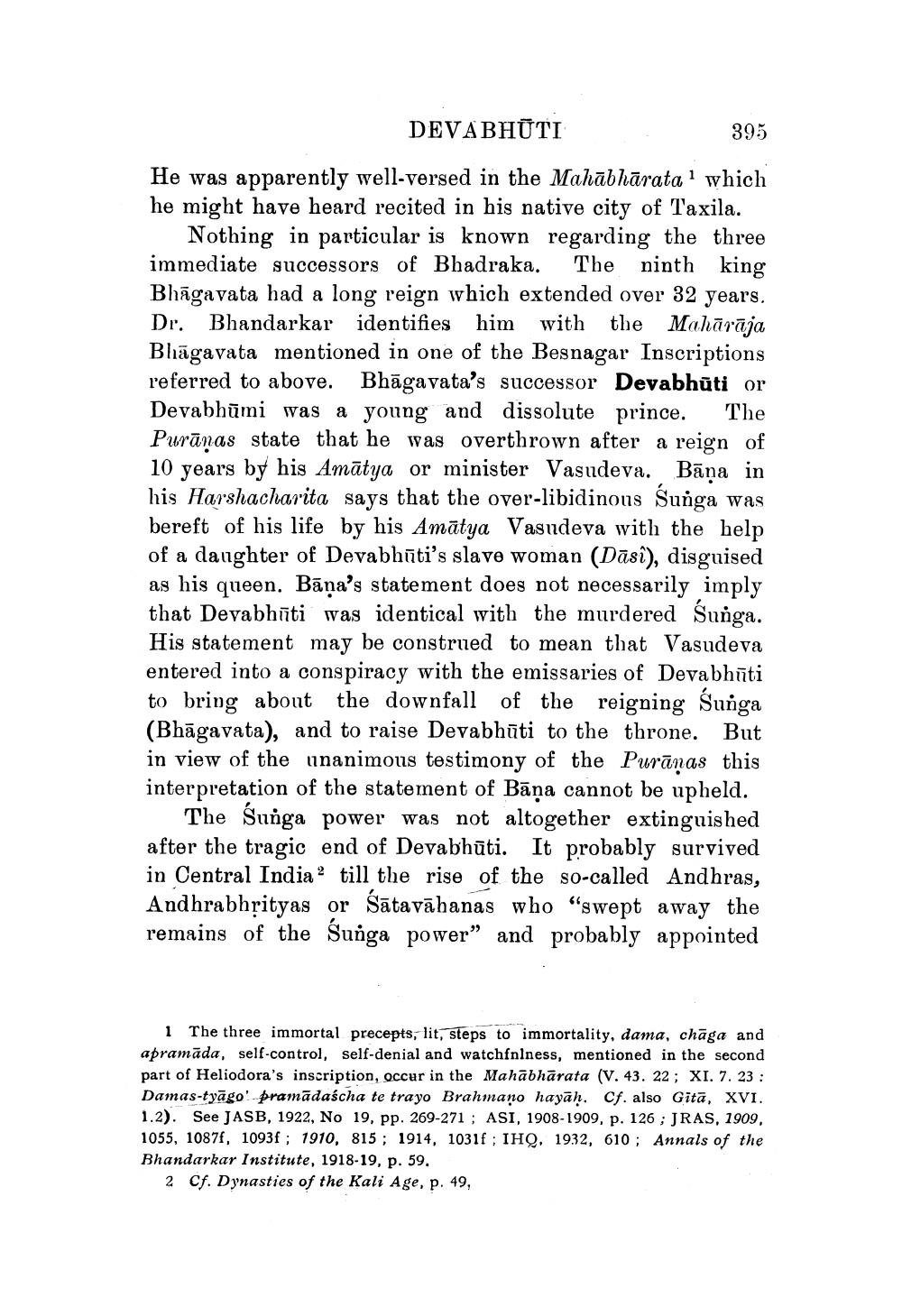________________
DEVABHŪTI
395 He was apparently well-versed in the Mahābhārata? which he might have heard recited in his native city of Taxila.
Nothing in particular is known regarding the three immediate successors of Bhadraka. The ninth king Bhāgavata had a long reign which extended over 32 years. Dr. Bhandarkar identifies him with the Mahārāja Bhāgavata mentioned in one of the Besnagar Inscriptions referred to above. Bhāgavata's successor Devabhūti or Devabhūmi was a young and dissolute prince. The Purānas state that he was overthrown after a reign of 10 years by his Amātya or minister Vasudeva. Bāņa in his Harshacharita says that the over-libidinous Surga was bereft of his life by his Amātya Vasudeva with the help of a daughter of Devabhūti's slave woman (Dāsi), disguised as his queen. Bāņa's statement does not necessarily imply that Devabhūti was identical with the murdered Sunga. His statement may be construed to mean that Vasudeva entered into a conspiracy with the emissaries of Devabhūti to bring about the downfall of the reigning Sunga (Bhāgavata), and to raise Devabhūti to the throne. But in view of the unanimous testimony of the Purānas this interpretation of the statement of Bāņa cannot be upheld.
The Sunga power was not altogether extinguished after the tragic end of Devabhūti. It probably survived in Central India? till the rise of the so-called Andhras, Andhrabhrityas or Šātavāhanas who "swept away the remains of the Sunga power” and probably appointed
1 The three immortal precepts, lit, steps to immortality, dama, chāga and apramāda, self-control, self-denial and watchfnlness, mentioned in the second part of Heliodora's inscription, occur in the Mahābhārata (V. 43. 22; XI. 7. 23: Damas-tyāgo' pramādaścha te trayo Brahmano hayāḥ. Cf. also Gitā, XVI. 1.2). See JASB, 1922, No 19, pp. 269-271 ; ASI, 1908-1909, p. 126 ; JRAS, 1909, 1055, 10871, 1093f; 1910, 815 ; 1914, 1031f ; IHQ, 1932, 610 ; Annals of the Bhandarkar Institute, 1918-19, p. 59.
2 Cf. Dynasties of the Kali Age, p. 49,




